The second retrocomputer badge from Hackaday
- Transfer

The positive experience of using retro badge badges at the Belgrade conference in May (news on Habré and Hackaday ) prompted the Hackaday management to repeat the experiment at the next event - Superconference, or Supercon for short, which will be held in November in Pasadin. The new model of the gadget is even more interesting.
It comes with a strap that allows you to wear it as a badge, is included in the cost of attending the conference, and leaves the eighties desktop computers behind in performance. In the original, the link to the ticket purchase page is given twice at the beginning of the article and once at the end - is this an SEO trick? - I will bring it once .
As before, it contains a color display with a resolution of 320x240 pixels, a full QWERTY-keyboard and inexhaustible programming possibilities. In its firmware, there are again both BASIC and CP / M, but now there are several pre-installed games, and Easter eggs have appeared. And what the participants of the conference will squeeze out of all this for the three days during which it will be held - we will see.
The designer of the second model of the badge, like the first, is Voya Antonych, the same author of the computer Galaksija, which was released in 1983. And the new development can also be repeated by you if you wish . The device looks amazing, but it is even more interesting to pick it up and type a program in BASIC on the keyboard, which, like the previous model, loudly clicks. Think about this number: 30000 buttons. So many of them needed to make computers for all participants.
How does it work and what can you do with it?
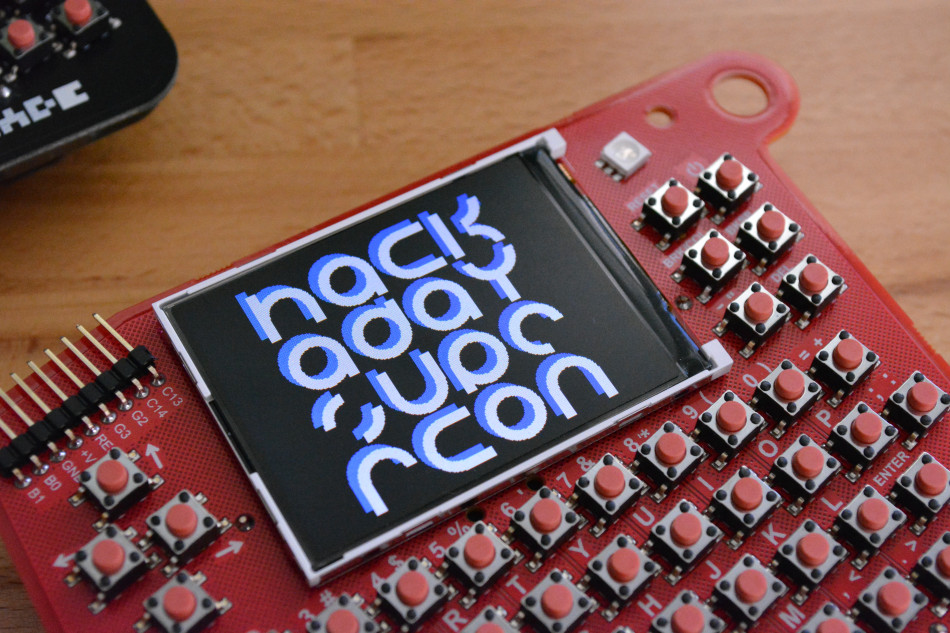

The badge is again equipped with a display that holds quite a lot of well readable text. It is again full-color, which the authors will like demos, but, of course, it can also be used as a monochrome. The assembly of cars this time will be made by Macrofab, which itself paid a part of their cost. The five prototype computers have red boards, the serial ones will have black. In the upper right corner the RGB-LED is again located, and in BASIC an operator is included to control it.
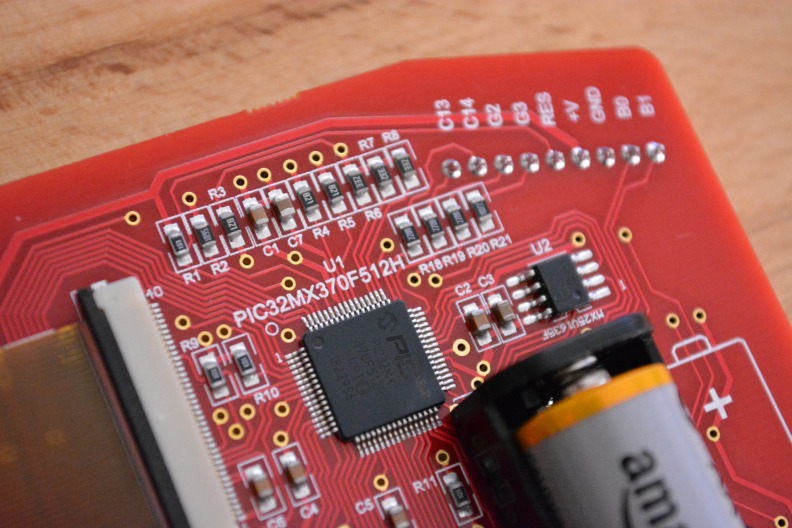
The most interesting thing happens on the back of the board. The PIC32MX370 microcontroller handles data processing, while the SST26VF016BT chip adds 16 megabytes (the original version mistakenly states that 16 megabytes) of flash memory. Both donated by Microchip.
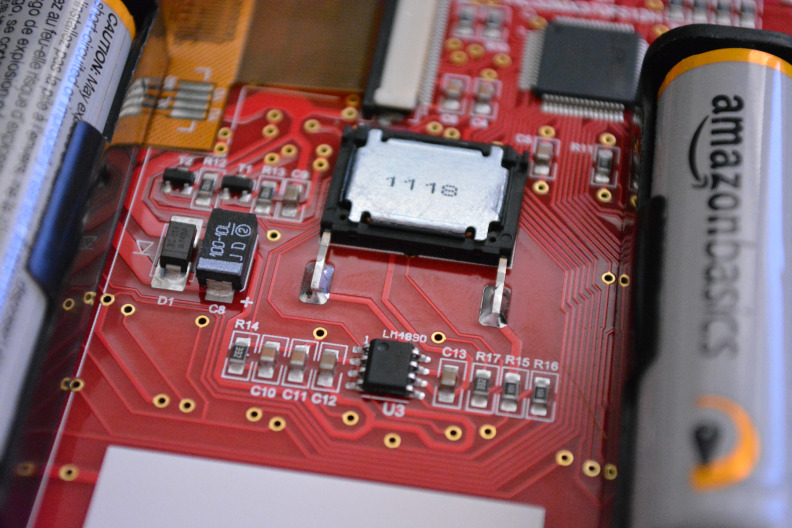
There are also an amplifier and a dynamic head. You can program three-voice melodies (hello, VI53) in BASIC and X.


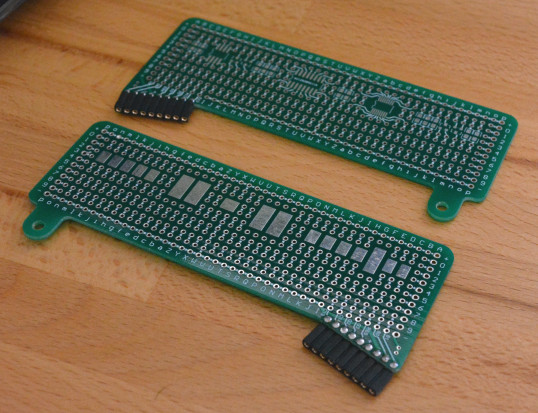
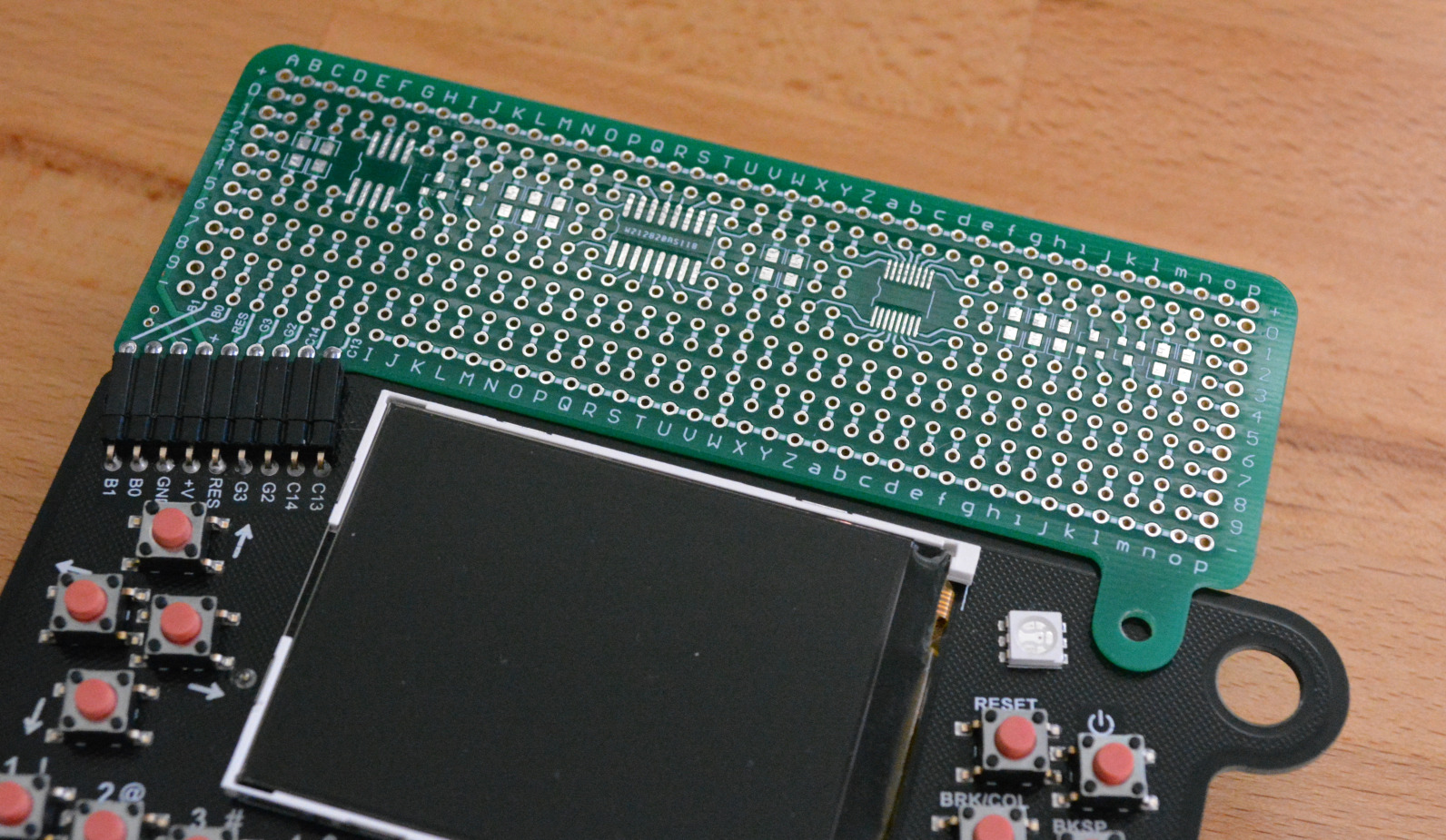
An innovation was the breadboard for assembling peripheral devices to a computer. It is connected to the comb, the same as the first model, and has a mounting hole. The board of the computer itself now has the same hole, which was not in the corresponding place of the board of the first model. The prototype of the model is shown here, the serial version will also be black. It provides sites for consoles, controlled by the I 2 C bus , manufactured according to the specification .
Four GPIOs controlled from BASIC, I 2 busC and serial port. At the conference it is recommended to take PICKIT and cable with FTDI.
At the previous conference, they just didn’t connect to the comb. Even before lunch, one of the badges on the screen could be drawn remotely from a smartphone paired with it over WiFi. Other computers were “trained” to exchange data over the air directly between themselves (remember Cybiko?).
We climb into the firmware
The firmware was written by Jaromir Sucuba, and work on it continues on GitHub right now . He started with a ready tokenizer, modified it, and then added functions for controlling the dynamic head, RGB-LED, GPIO, display, working with RAM using the PEEK and POKE commands, etc. As before, there is a Z80 emulator and a CP / M OS, and an additional flash memory chip can be used as disk space for this OS.
Recommended Project Topics:
- programs in BASIC
- three-part music
- OS / CP software
- peripheral control via GPIO, I 2 C and serial port
- at the previous conference, the most experienced participants were offered to replace the firmware with their own
At the previous conference, many liked the two-player game , where on the computer screen of one of the players the ship fired a laser, and the beam “teleported” to the computer screen of another player. Can you make, for example, a four-user version of this game?
There will be as many computers manufactured as participants register without a stock, and if you don’t get to the conference, you can hardly buy such a badge separately - the participants will not want to sell them. But since it is open-source hardware, you can not go anywhere, but make it yourself - even if it is not a very beautiful board, but your own. And this means that similar machines may appear at other major events, one way or another connected with retrocomputing, including Chaos Constructions.
